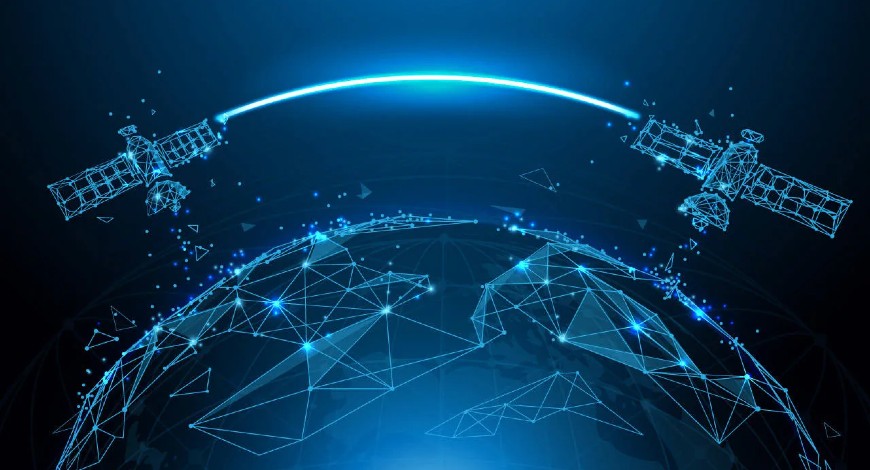Trends
Satellite communication market expanding rapidly

The global satellite communication market was estimated at $56.01 billion in 2019 and is expected to hit $99.58 billion by 2027, registering a CAGR of 9.2% from 2020 to 2027.
According to an article issued by CNBC, the estimated $400 billion space economy is still broadly dominated by large aerospace and defense companies, serving government-funded interests. But investors say that’s changing, with Morgan Stanley, Goldman Sachs, Bank of America and UBS each issuing frequent research for clients on how the space industry is growing. Wall Street’s consensus is that space will become a multitrillion-dollar economy in the next 10 to 20 years – a view investors today are banking on.
During 2020, the overall global space economy generated revenue of $371 billion, an increase of 1.4 percent compared to 2019.
The commercial satellite industry once again continued to be dominant, accounting for $271 billion or nearly 73 percent of the world’s space business.
Technology innovations increased data capacity and helped increase subscribers as satellite broadband revenue grew by 10 percent during 2020 to $2.8 billion.
Innovations in radio frequency (RF), carbon emission and other mapping capabilities helped increase satellite remote sensing revenues by 12 percent compared with the previous 12 months to $2.6 billion.
During 2020, revenues generated by commercial launch services increased by 9 percent to $5.3 billion as the U.S. solidified its market share leadership in launch services.
Global satellite ground equipment revenues maintained 4 percent growth over the previous year to just over $135 billion, led by continued worldwide sales of global navigation satellite system (GNSS) terminals such as smartphones and tablets.
The satellite industry, despite the pandemic, showed growth. Analysts say the global satellite communications and telecommunications market will grow 3.3% in 2021.
The main areas of application of satellite IoT technologies are well known: maritime shipping, the oil and gas industry with monitoring the condition of expensive equipment and highways, tracking the location and condition of goods, people, and any assets.
But in addition to these already well-known applications of satellite IoT, there are several other areas where these technologies can lead to a noticeable change in the very appearance of basic services and services.
Let’s look at how satellite communication is used today in ways that we are not aware of:
Satellite IoT flood control. Sensors installed in hazardous areas will transmit monitoring data to the control service, which will allow, in the event of a flood threat, to promptly take appropriate action situations.
Observation of fires. Sensors connected to a satellite system, which are attached to trees at about three meters in height, are becoming more common. They can transmit more than 20 environmental parameters, including temperature, barometric pressure, humidity, etc.
Oil spills and ice shears. Systems of satellite buoy-sensors, in addition to determining the boundaries of the spill, monitor the situation and take real data on the impact on the environment. When collecting data on ice conditions, sensors record and transmit not only data on the movement of ice masses, but also relevant meteorological information, on the basis of which an operational and long-term analysis of the movement of ice masses is built.
Accumulation of plastic debris in the ocean. The ocean-going garbage collector, equipped with satellite communication systems, relays critical data on the state and operation of a specific vessel to the situational center, and monitors the cleaning system.
UAV operation support. The optimal solution turned out to be the use of satellite technologies, which rely specifically on low-orbit constellations, since control can be carried out in a system with a low signal delay, AdvanceTC specialists state. Scope of application – delivery of goods and vaccines by unmanned aerial vehicles, remote sensing of the Earth, environmental monitoring, recording damage from natural disasters, tracking fires, weather reconnaissance. Communication is an important component of security, especially when it comes to being in places remote from civilization, for example, mountains. A smartphone will not help in such a situation, since the nearest base station is located hundreds, if not thousands of kilometers from you. But the satellite communicator does not have such restrictions and, most importantly, it has an SOS button that works globally.
Search for people. Satellite sensors and trackers monitor people who are in extreme or potentially dangerous conditions – geologists, surveyors, drillers, travelers.
The rise in the use of satellite phones due to the unavailability of cellular communications in emergencies such as man-made or natural disasters, and even in defense missions to communicate with subordinates, is expected to drive market growth in the near future. In addition, satellite phone makers are looking to create small, lightweight devices that will also drive future market growth.
With new LEO satellite networks and significantly more bandwidth available, the satellite communication market is expected to become a viable connectivity option for more and more consumers and professional users.
Increasing demand for hybrid mobile satellite phones that can function dually, both as satellite phones and smart phones, will accelerate the growth of mobile satellite phone market.
Companies that are active in the device segment of the space communication market can expect rapid growth over the next 5 years. IT News Online





You must be logged in to post a comment Login